By David A. Norris
Smoke from hundreds of cannon muzzles fueled an ever thickening fog hovering over the Caribbean Sea south of the French-occupied colony of San Domingo on February 6, 1806. It was scarcely four hours earlier that Rear Admiral John Thomas Duckworth’s small British fleet discovered the French ships of Vice Admiral Corentin Urbain de Leissegues, igniting the Battle of San Domingo. From rooftops and vantage points, French colonists and soldiers anxiously peered into the smoke, unable to distinguish friend from foe. At last, a strong breeze brushed away some of the smoke. The colonists saw across the water a once proud ship of the line reduced to a splintered hulk, shorn of her masts and rigging. Swept by patriotic joy, the spectators clapped their hands in delight.
At the British victory at Trafalgar the previous year, the loss of 11 French and 11 Spanish ships of the line left French Emperor Napoleon unable to confront Britain’s Royal Navy. British blockaders kept most of the emperor’s remaining French and Spanish capital ships penned up in their harbors. But the French had by no means given up; instead, they embarked on a new strategy of attacking British colonies and shipping in the Caribbean. At that time, the sugar industry was so profitable that the main sugar-producing islands of the West Indies were among the most valuable colonies in the world. Raiding these British colonies, or capturing the ships that served and protected them, would deal a sharp blow to London’s power.
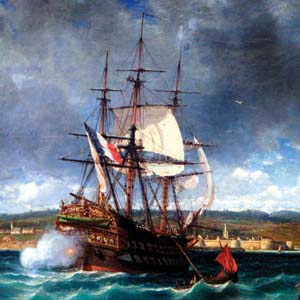
It was not long after Trafalgar that the French were at sea again. When early winter storms drove Admiral William Cornwallis’s blockading squadron off-station, the port of Brest was unwatched. Once the British were gone, 11 French ships of the line slipped out to sea from Brest on December 13, 1805.
One day later, the French ships separated into two squadrons. Six ships of the line, under Rear Admiral Jean-Baptiste Philibert Willaumez, went to prowl the South Atlantic and Caribbean. Among Willaumez’s officers was Captain Jerome Bonaparte, youngest brother of Emperor Napoleon and commander of the 74-gun Veteran.
Leissegues took the other five ships of the line. His pennant flew over the 120-gun Imperial, commanded by his flag captain, Julien-Gabriel Bigot.
Laid down at Brest in 1793, the Imperial was first named the Peuple, then the Vengeur, before receiving her final name. She was designed by Jacques-Noel Sane, France’s finest naval architect. Sane was known as the “Vauban of the Navy” in comparison to Sebastien Vauban, who revolutionized military land fortifications in the 17th century. Aboard the Imperial were 32 36-pounders on the lower deck and 34 24-pounders on the middle deck. Rather than the expected array of lighter 12-pounders on the upper deck there were 34 18-pounders. On the forecastle were 18 8-pounders and half a dozen 36-pounder carronades.
Also with Leissegues were the 80-gun Alexandre and the 74-gun ships Jupiter, Diomede, and Brave. Two 40-gun frigates, the Comete and the Felicité, and the corvette Diligente rounded out his small fleet.
Although the ships themselves were adequate and well armed, a great proportion of the crews were landsmen recently conscripted by Napoleon’s regime. For many of them, the escape from Brest was their first time at sea. The crew of the Alexandre was supplemented with soldiers from the 15th Regiment of the Line and some army artillerymen.
Leissegues was ordered to transport 900 troops to the city of San Domingo on the island of Hispaniola. Then, he would cruise off Jamaica for two months, or head for Newfoundland if the Caribbean was too full of British warships.
News of the French escape from Brest reached the Admiralty on December 24. London ordered two squadrons to find them, but neither was able to leave England until late January of 1806.
However, a British convoy sighted Leissegues on December 15. The convoy and its armed escorts scattered to elude the enemy. On December 23 the frigate Arethusa delivered news of the sighting to the HMS Superb, the 74-gun flagship of Vice Admiral of the Blue Sir John Thomas Duckworth.
For about two months, Duckworth had been on blockade duty off Cadiz, keeping an eye of the remnants of the Franco-Spanish fleet that was defeated at Trafalgar on October 21. On November 26 he received a report that a French squadron lurked near the Savage Islands, between Madeira and the Canary Islands. Duckworth left behind two frigates to watch Cadiz and sailed south to look for this new menace.
The ships in question were five ships of the line commanded by Rear Admiral Zachary Allemand. They had left Roquefort in July with instructions to join the fleet from Brest, but the latter force never ran the British blockade. For several months, they ravaged British shipping in the Atlantic, eventually taking more than 40 prizes including the 50-gun HMS Calcutta. They eluded Duckworth and made it back to safety in France.
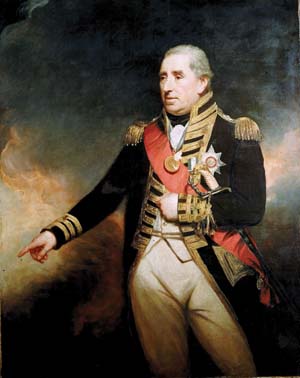
Meanwhile, Duckworth gave up looking for Allemand. He was en route back to his station off Cadiz when he met the Arethusa and learned of a French fleet to his west. Again, Duckworth hurried after an enemy squadron.
On Christmas Day 1805, about 300 miles northwest of Tenerife, Duckworth’s lookouts spotted nine sails to their south. The British tacked to follow them. They were neither the ships of Leissegues, nor those commanded by Allemand. Rather, they were vessels belonging to Willaumez.
“You cannot conceive the joy expressed by every one on board,” an officer aboard the Superb wrote in a letter. “Every individual thought himself a king, and expected that day to be one of the happiest Christmases he had ever spent.”
For Duckworth’s crews, the dreams of glory and prize money soon “turned into melancholy … from the very bad sailing of several ships of the fleet.” By early afternoon on December 26, the Superb had closed to within about seven miles of the hindmost French ship and was gaining. But Duckworth’s squadron was strung out over a vast distance. Four miles separated the Superb from the nearest vessel, the Spencer, which was five miles ahead of the Agamemnon. The others were more than 20 miles away. While it was likely that the Superb could soon close within range of the nearest French ship, it was also possible that other French ships could overwhelm her, the Spencer, and the Agamemnon before the rest of the force could arrive. Thus, at 1 pm Duckworth signaled an end to the chase. Willaumez opted to keep moving rather than risk battle and escaped into the South Atlantic.
Leissegues avoided the British but fell into the Atlantic’s winter storms. On Christmas Day, the Jupiter lost her main topmast, and the Diomede and the frigate Comete developed dangerous leaks. The storm intensified, driving the Alexandre and the Brave away from the rest of the force. The French admiral and most of his ships anchored at San Domingo on January 20, 1806. Nine days later, the Alexandre and the Brave straggled into the harbor, battered and leaking.
Major General Jean Louis Ferrand, the French officer in command of San Domingo, needed the troops brought by Leissegues. During the 1790s tumultuous change, revolution, and violence swept Hispaniola. In 1791 a slave revolt broke out in Saint Domingue and toppled the French administration. After three centuries of Spanish rule, Spain ceded the colony of San Domingo to France under the terms of the 1795 Treaty of Basel. France never permanently regained control of Saint Domingue, and it became the independent Republic of Haiti in 1804. Haitian forces temporarily overran the whole island, but by 1806 the former Spanish colony of San Domingo was back in French hands, and the port of San Domingo offered refuge for French warships and privateers.
In the city of San Domingo, the French population was delighted to see a naval squadron from home in their beleaguered and isolated colony. Grateful colonists held balls and entertainments for the naval officers.
Leissegues might have sailed on to the friendly port of Havana. The capital of colonial Cuba, Havana was a center of Spanish naval construction, and it offered better repair facilities than San Domingo. Havana’s harbor was better protected than the large, open bay around the city of San Domingo. But the admiral knew British ships might lurk between Hispaniola and Cuba, and therefore he decided to remain in port and complete the repairs as best they could.
Meanwhile, Duckworth dispatched the Amethyst to England with his reports of the French. He also ordered the 74-gun Powerful to warn British interests in the East Indies about the prowling French squadrons. After he reached Barbados on January 12, 1806, Duckworth sent the Acasta ahead to St. Kitts to start preparations for taking on water and supplies for his command.
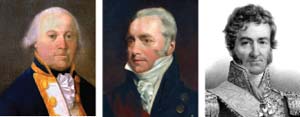
With the Powerful on her way to the East Indies, Duckworth had five ships of the line: his flagship Superb, the 80-gun Canopus, the 64-gun Agamemnon (once Horatio Nelson’s ship), the 74-gun Spencer, and the 74-gun Donegal. Rounding out Duckworth’s force were the frigates Amethyst and Acasta.
Originally the French-built Benjamin Franklin, the Canopus was captured at the 1798 Battle of the Nile. Her new name was doubly appropriate.Canopus was the ancient name for Aboukir, a town near the 1798 battle site. It also was the name of the ship’s pilot of King Menelaus of the Trojan War. Taking the Canopus as his flagship was Rear Admiral of the Blue Thomas Louis. According to family legend, Louis’s grandfather was an illegitimate son of Louis XIV. He served for years with Nelson, earning the friendship and respect of the great admiral. Louis’s flag captain was Captain Francis William Austen, brother of the as yet unpublished novelist Jane Austen.
Duckworth’s ships anchored at St. Kitts on January 19. Two days later they were joined by two more ships of the line: the Atlas and the Northumberland. Their arrival brought Duckworth’s squadron up to seven ships of the line and gave it three admirals. Aboard the 74-gun Northumberland was Rear Admiral Alexander Inglis Cochrane, commander of the Royal Navy’s Leeward Islands Station. Cochrane would later raid the Atlantic coast of the Unired States during the War of 1812 and direct the 1814 bombardment of Fort McHenry that inspired Francis Scott Key to pen “The Star-Spangled Banner.”
On January 31, Lieutenant Nathaniel Day Cochrane (a nephew of Rear Admiral Cochrane) and the 18-gun sloop Kingfisher were anchored at Tortola in the Virgin Islands. Night brought to an end a long day of painting, caulking, and tarring. At midnight, a man hailed them from a small boat and asked if the Kingfisher was a British warship. Assured that it was, the rower explained that he worked for a Scottish trading firm on the island of St. Thomas. He had learned that a French flotilla was at San Domingo, taking on water and supplies. With that important news, the merchant had rowed 20 miles in hope of contacting the Royal Navy.
The Kingfisher was coated with wet paint, and her rigging was damp with tar. But Cochrane ordered, “Damn the paint! Up anchor!” Within 10 minutes of receiving the news, his ship was underway. Heavy dew slowed the drying of paint and tar. A night of working on the ship under sail left the crew “bedaubed with white, green, black, and red paint and tar, and by daylight, the Kingfishers were transmogrified into spotted tigers,” recalled an officer.
Fresh breezes sped the Kingfisher toward St. Kitts, but the winds dropped away and becalmed the sloop a few miles offshore of the island’s harbor at Basse-Terre. Lieutenant Cochrane called for his gig and was rowed the rest of the way to deliver his news on February 1. After hearing Cochrane’s report, Duckworth ordered his ships to sail.
Five days later, the frigate HMS Magicienne joined them in the Mona Passage, between Puerto Rico and San Domingo. With the frigate was a Danish schooner that left San Domingo a few days earlier. The Danish captain relayed a great deal of detail about Leissegues’ vessels. Several French officers thought that the schooner should be burned rather than allowed to leave port, but Leissegues overruled them.
By February 5, the French ships were still not quite ready to return to sea. On that day, a Captain Taggart, the commander of an American merchant ship, landed in San Domingo. He tried unsuccessfully to warn the French of the presence of British warships. He said that he had spoken with the crew of a warship that belonged to a squadron that was looking for Leissegues. But the officers refused to believe his report.
After dawn, the corvette Diligence approached Leissegues’ ships, firing her guns in alarm. Taggart’s warning was all too correct; the Diligence had spotted the enemy off Catalina Island, 50 miles to the east. At 7:30 am, when the British came into sight, Leissegues was caught flat footed. The admiral and some of his officers were ashore. Many men were away from their ships on work details; some of them were miles away up the Rio Ozama loading fresh water casks.
An army officer visiting the Diomede found the ship in great disarray. To tilt the vessel and aid repairs to the hull, the starboard guns and some of the ship’s stores were rolled to the larboard side. Aboard the Brave, water casks and firewood brought aboard the previous day were piled around the guns. There was no longer any time to stow the supplies, and the Brave’s crew jettisoned the casks and firewood. Throughout the squadron, the ships’ new caulking would not have time to dry before the ships saw action.
San Domingo’s bay formed a shallow semicircle opening to the south and running about 25 miles east to west. Ferrand felt the admiral should remain close to shore. The French general said his land artillery could hold off the British and allow time for the scattered work details to get back to their ships, and properly clear them for action.
Leissegues did not want to become hemmed in by a superior force. Pressed for time, the admiral ordered the ships to cut their cables and sail west, which would take them around Cape Nisao and toward Ocoa Bay. They moved in two lines roughly parallel with the south shore of Hispaniola. The Alexandre, Imperial, Diomede, Jupiter, and Brave formed the outer line; the three smaller ships formed the inner line.
At 7:30 am on February 6, 1806, the frigate Acasta spotted the French ships in line off the city of San Domingo. From the Acasta’s rigging flew the signal “enemy in sight.”
Of Duckworth’s ships, all but Captain Sir Edward Berry’s Agamemnon had missed Trafalgar. Now, as a new fleet action loomed ahead, Duckworth placed his seven great ships in two lines. In the starboard line came the Superb, Spencer, Northumberland, and Agamemnon; the larboard and leeward line held the Canopus, Donegal, and Atlas. His smaller vessels formed a separate line to windward. Duckworth guessed that the French would sail around Cape Nisao to reach Ocoa Bay. Erroneous reports received by the British claimed there were more French ships of the line waiting in the bay. The British ships sailed to intercept the enemy when they approached Cape Nisao.
Duckworth’s flag captain on the Superb, Richard Goodwin Keats, had served with some distinguished comrades. He was formerly a lieutenant aboard the 90-gun Prince George during the American Revolution, when British Prince William Henry (later King William IV) served as a midshipman. None other than Nelson himself wrote of Keats, “I esteem his person alone as equal to one French 74.”
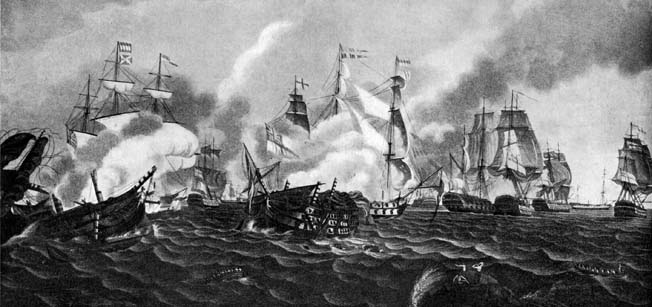
As the ship sailed into battle, the Superb’s musicians played for the crew. After “God Save the King,” they went to the lively folk tune “Off She Goes,” and followed that with the patriotic “Nelson of the Nile.” Keats raised a portrait of his old friend Nelson from the mizzen stays.
Ten minutes later, Duckworth’s Superb fired the first shots of the battle at Captain Pierre-Elie Garreau’s Alexandre. Within another five minutes, the Northumberland was engaged with the Imperial, and the Spencer closed in to fire on the Diomede and the Imperial. Attacked before they could round Cape Nisao, the French were cut off and hemmed into a small bay east of the cape.
The broadside from the Superb wreaked such damage to the Alexandre that the latter luffed to and dropped astern of the other ships. As the Superb neared the Imperial, the great three-decker held its fire as Duckworth’s flagship approached to within pistol-shot range. Before the French guns could throw their heavy load of iron into Duckworth’s flagship, the Northumberland slipped into the narrowing gap between the two ships. When the Imperial fired, several of her shots punched entirely through the Northumberland and crashed into the Superb.
Duckworth signaled for closer action. Keats’ portrait of Nelson still fluttered from the mizzen stays, although both Captain Keats and the image were splattered with the blood and brains of a man struck down by a cannon ball.
After suffering damage to the rudder, the Alexandre slipped between the Northumberland and the Spencer at about 10:25 am. Captain Robert Stopford of the Spencer raked the bow of the Alexandre and wore ship to empty another broadside. That day the winds were light, allowing powder smoke to collect and linger over the combatants. Amid the thick haze, officers aboard the Superb and Northumberland were unaware of Stopford’s maneuvering, and their guns mistakenly fired into the Spencer. At the same time, some of the Imperial’s gunners fired blindly into their comrades aboard the Alexandre.
Up to that point, the Superb, Northumberland, and Spencer had taken the brunt of the French fire. Duckworth’s other vessels strained to reach the center of the action. Captain Austen wrote to his fiancée, Mary Gibson, “The Canopus sails so bad that we were nearly the last ship in action.” Ten minutes later the guns of the Superb and the Spencer had cut up the rigging and masts of the Alexandre, and the Canopus was fast closing in. Then, Austen’s ship fired into the Alexandre. “The first broadside we gave brought our opponent’s three masts down at once,” wrote Austen
As usual in naval warfare of the time, ships of the line generally stood aloof from the smaller enemy frigates and corvettes, which stationed themselves away from the fighting. Captain Cocault of the Diligence watched from a distance as “the quickness of the firing, and the thick smoke which concealed the vessels, prevented us from distinguishing any object. Being to the windward of our squadron … I received a part of the enemy’s fire, which was directed against our headmost ships.” Cocault and the frigate captains were obliged to shift out of range of the stray shots.
Ashore, French colonists watched the battle from rooftops in the city, trying to distinguish what was happening amid the smothering pall of powder smoke. When the wind stirred slightly and brushed away some of the smoke, the townsfolk saw a dismasted ship lying dead in the water. Army officer Jean-Baptiste Lemonnier-Delafosse remembered a brief wave of relief washing over the spectators, until the air cleared enough for them to realize that they had mistaken the shattered Alexandre for a British ship.
Following in Austen’s wake, the Atlas and Donegalj oined the battle by firing into the smoke shrouding the stricken Alexandre. Then, the Canopus joined the battle against the Imperial, while the Donegalj and Atlas attacked the Brave and the Jupiter. Struggling to catch up with the other vessels, the Agamemnon was the only ship of the line not yet engaged in battle. With the Alexandre reduced to a dismasted wreck, the Spencer turned toward the other enemy ships. At 11:30 am, the Alexandre became the first of Duckworth’s foes to lower the colors.
By that time, Leissegues was down to four ships; his enemies would have seven on hand once the Agamemnon caught up with them. Although the British ships, especially the Northumberland, had taken some damage, they were in a position to pick off the French one by one. Duckworth’s ships gradually pushed the French back closer to the shore of Palenque Bay.
After firing some of the final shots to hit the Alexandre, the Donegal fired her starboard broadside into the Brave. Crossing the stern of the Brave, the Donegal brought her larboard battery to bear. British shot severed stays and halyards and slashed the sails. Cannon balls crashed through the hull, dismounting 15 guns. There was five feet of water in the hold. Captain Louis-Marie Coude stayed at his post, although he was wounded four times. Two of Coude’s officers were killed, and five were wounded. Less than half the crew was still on their feet. At 11:45 am, the Brave became the second of Leissegues’ vessels to strike. The frigate Acasta took her under tow.
Captain Pulteney Malcolm’s Donegal sailed on to confront the Jupiter. Malcolm crossed the enemy’s bow so closely that the French bowsprit loomed over the deck of the Donegal. British tars lashed the enemy bowsprit fast with a hawser. Captain Jean-Baptiste-Jacques Laignel of the Jupiter fell wounded. While the ships were tied together, small arms fire struck down many aboard both vessels. Some wounded men fell overboard and were trapped and crushed between the ships’ hulls. Resistance soon collapsed and the Jupiter surrendered. Malcolm sent a lieutenant with a 100-man prize crew aboard and took her in tow.
The Agamemnon, launched in 1781, was the most elderly of the British ships on hand. After lagging far behind the others, the old ship at last neared the fighting around the Imperial.
The Atlas and the Canopus joined to hammer the Imperial. After throwing two broadsides into the French flagship, the tiller of the Atlas jammed. Shot from the Diomede tore into the Atlas’s starboard quarter. Amid the chaos, and unable control her course, the Atlas lost her bowsprit when she ran afoul of the Canopus.
The most persistent of the Imperial’s foes was the Northumberland. A cannonball rushed so near Admiral Cochrane’s head that the suction pulled his hat off. Cochrane’s fire, combined with that the Superb and Canopus, ripped into the 120-gun ship. By 11:30 am, the Imperial had lost her main and mizzen masts. Captain Bigot took a serious head wound and was carried below. Captain Louis-Joseph Caboureau, who stepped into Bigot’s place, was soon wounded four times. Five more of the ship’s officers were wounded, and two were killed.
An officer aboard the Superb wrote that a French shot demolished a wooden structure on the poop, which contained one compartment filled with marine muskets and another used as a chicken coop. Splinters, shattered muskets, and bayonets went spinning through the air while a rooster flapped his way up to the spanker boom and started crowing. Another shot hacked through the boom, breaking it off behind the rooster, so the bird flapped again and settled on the remaining stump of the boom and resumed crowing.
Outnumbered by that point and with two badly damaged ships to seven mostly fresh adversaries, Leissegues saw escape was impossible. Determined to deny the British his own flagship, he had a sail rigged on the remnant of the mizzenmast and steered north toward the beach along Palenque Bay.
By this time the Northumberland could not spread enough canvas for a pursuit. Captain Keats of the Superb thought it unwise to follow the French into the shallower water. At 11:40 am, the Imperial’s keel struck the sea bottom, lurching to a halt with such force that the foremast snapped and fell.
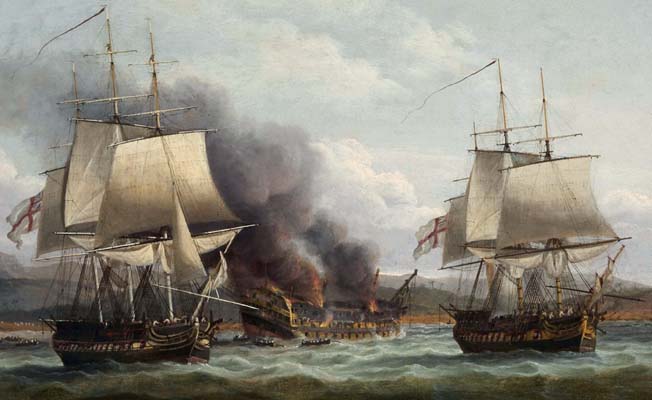
Moments later, the mainmast of the Northumberland snapped and plunged down to crash on the forward starboard side of the deck. The impact knocked out several of the starboard guns on the main deck. Also crushed were several of the ship’s boats, which just before the battle had been filled with water in case of fire. A splinter hurtled from the shattered mast and struck Admiral Cochrane with enough force to send him to his knees.
The Spencer joined the Atlas in attacking the only remaining enemy ship of the line, the Diomede. Berry ordered the Agamemnon’s gunners to cease firing at the Diomede, as he believed her captain was “taking off his hat and making every token of surrender.” To Captain Dunn of the Acasta, it appeared that the ensign and the pennant of the Diomede had been lowered. But little time passed before Henry’s ship ground to a halt 200 yards astern of the French flagship. All three of the Diomede’s masts tumbled down at the impact “with a crash as if a forest was rended,” as Duckworth put it. Yet the battered hulk still fired several more shots at her enemies, an act of bravado that marked an end to the battle.
At the conclusion of an action of about two hours, three French ships had surrendered and two others were hard aground. Only their two frigates and the corvette escaped. All of Duckworth’s ships were afloat, and only the Northumberland had taken significant damage.
As the British did not immediately move to occupy the stranded ships, Leissegues began getting the survivors ashore. One day later nearly all the flagship’s survivors and part of the crew of the Diomede were evacuated. Admiral Leissegues saved his flag as well as the much prized Napoleonic eagle that had been given to his ship.
The next day, Captain Richard Dunn of the Acasta took possession of the Imperial and Diomede. With a flotilla of ship’s boats, he sent the remaining crew away as prisoners. He reported taking 150 prisoners from the Diomede, including Captain Henry. Barely half a dozen were left to take from the Imperial; the highest ranking among those few captives was a petty officer. Dunn’s sailors plied their oars through shallow waters churning with dangerous surf. Captives and captors alike saw sharks lurking around them, attracted by the fresh blood spilled into the seas by a naval battle. As the two stranded ships were heavily damaged and stuck fast in treacherous waters, once the last prisoners were removed, Dunn set the grounded vessels on fire.
British losses at the Battle of San Domingo ran to 74 dead (including two officers, both midshipmen) and 263 wounded. Casualties were heaviest aboard the Northumberland, which accounted for more than a quarter of the British toll: 21 dead and 79 wounded. Among the dead was Alexander Sapenack, Admiral Cochrane’s cook.
French losses were not precisely tallied but were much higher. Duckworth reported the killed and wounded on the three captured vessels as 300 aboard the Alexandre, 260 on the Brave, and 200 aboard the Jupiter. Other estimates reported 500 casualties on the Imperial alone, and another 250 on the Diomede.
Other than Bigot of the Imperial, all of the French captains were captured and held until after Napoleon’s first abdication in 1814. Officers and sailors who escaped capture waited in San Domingo. The French eventually arranged passage for them to United States, where French consuls took charge of them.
Controversy swirled around Captain Henry when he offered his sword to Keats of the Northumberland. Keats heatedly refused to accept the sword; he was convinced that Henry had broken naval and gentlemanly tradition by only pretending to surrender his ship. Then, thought Keats, once Henry had tricked his enemies into ceasing fire, he deliberately ran the Diomede aground.
Henry was mortified at the accusations. Allowed to speak for himself, he explained that his ensign had been shot away. His pennant, he insisted, had flown until the mainmast crashed down when his ship ran aground. Further investigation revealed that some British officers had observed the captain of the Brave making the clear signs of surrender and mistaken his ship for that of Henry’s. Satisfied, the British acknowledged that Henry fought his ship honorably.
Aboard the Superb, the defiant rooster had been hit by a splinter and lost an eye but survived well enough. The sailors took a fancy to the bird, decorating him with rings and gaudy ribbons, and saved him “from the dire hand of the poulterer.” Adapting to his newfound status as a mascot, the rooster ate from sailors’ hands and allowed himself to “be fondled like the greatest lapdog.”
The Jupiter and Alexandre were repaired and taken into the Royal Navy. Although the Brave foundered in a storm on its way to Britain, Captain Malcolm of the Donegal rescued her crew.
Captain Raymond Coucault of the Diligente reached Port-Louis in Brittany and delivered news of the disaster. The report released to the French public, whether Coucault’s or simply a version released under his name, painted a highly embroidered version of the clash. News of the defeat was made more palatable by adding false claims that Duckworth had a larger squadron of nine ships of the line; and that two of Duckworth’s ships were wrecked and two others were dismasted.
Grateful to Lieutenant Cochrane of the Kingfisher for the timely news of the enemy fleet, Duckworth dispatched the young officer to rush the news to Great Britain. Cochrane was rewarded handsomely with a promotion to post captain. His first command in that rank was the Northumberland.
Compared to the joy after the victory at Trafalgar, reaction in Britain to the Battle of San Domingo was somewhat muted. Victory was no more than the expectation, because the enemy was outnumbered. Planters and merchants of the British Caribbean colonies, though, had been in great peril from the potential of French raids and so were much more impressed by the victory.
No one in 1806 could have known that the Battle of San Domingo would be the last fleet action on the open sea in the Napoleonic Wars. Indeed, it was to be one of the last major fleet actions of the age of sail.
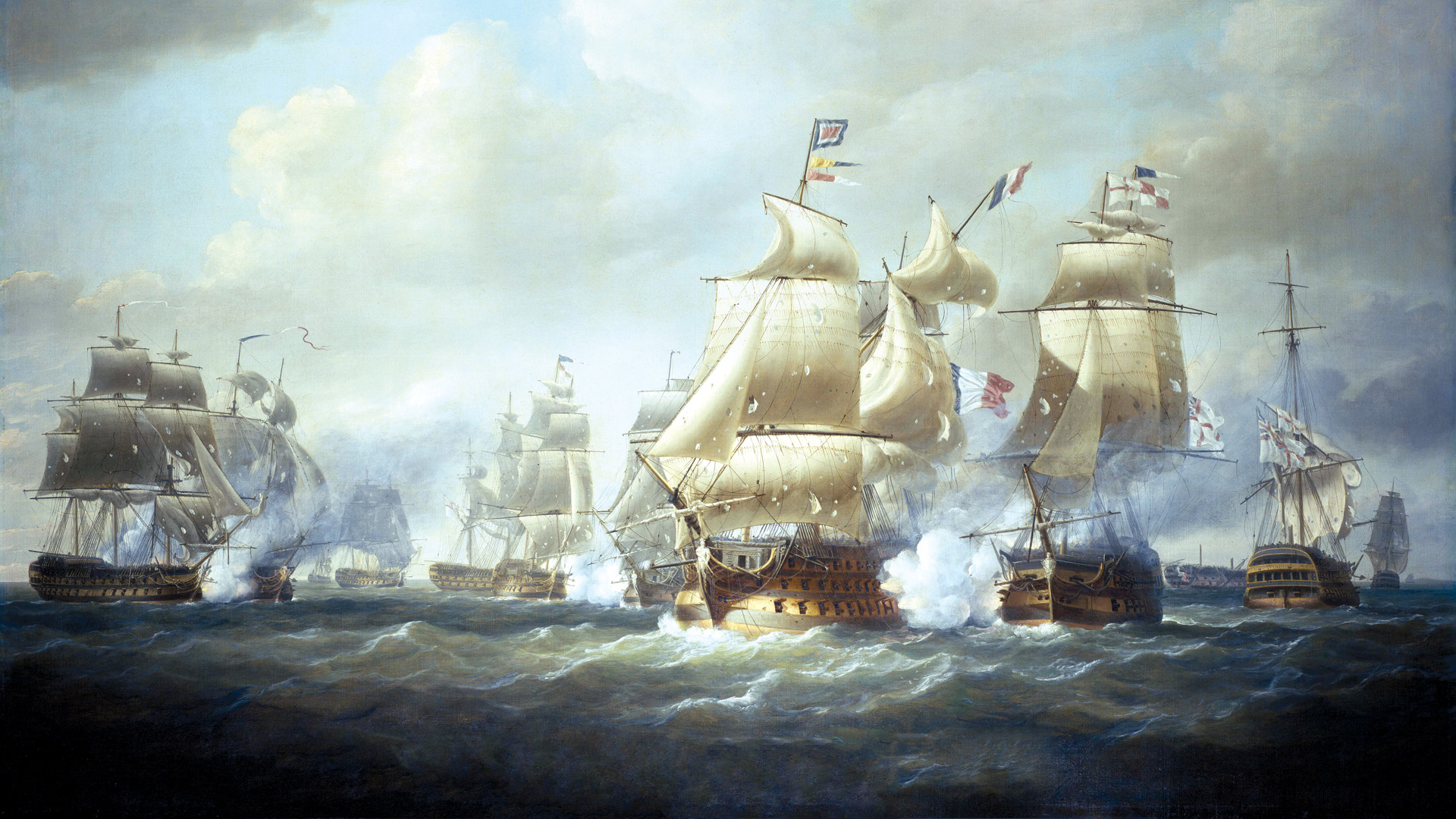
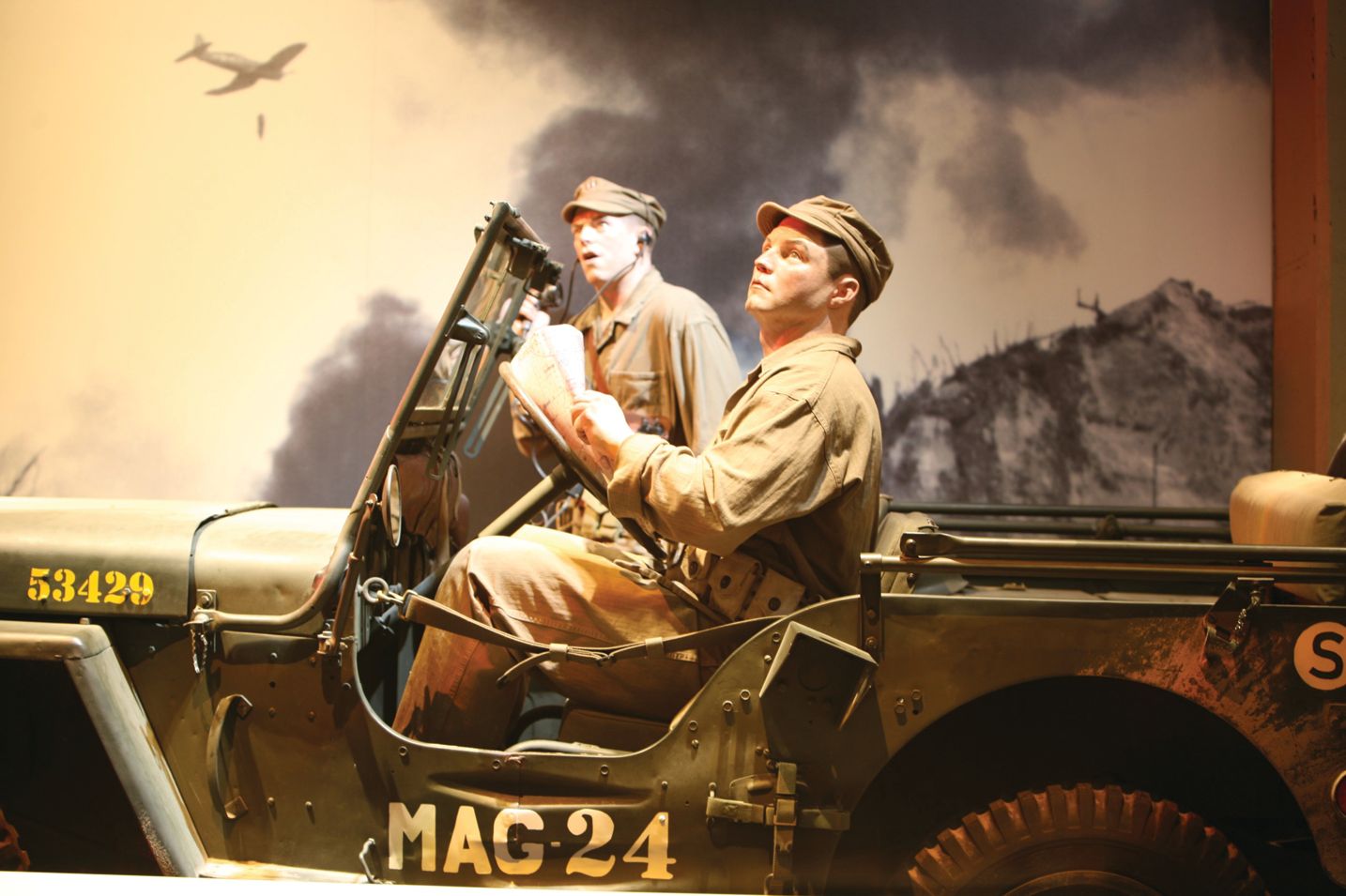
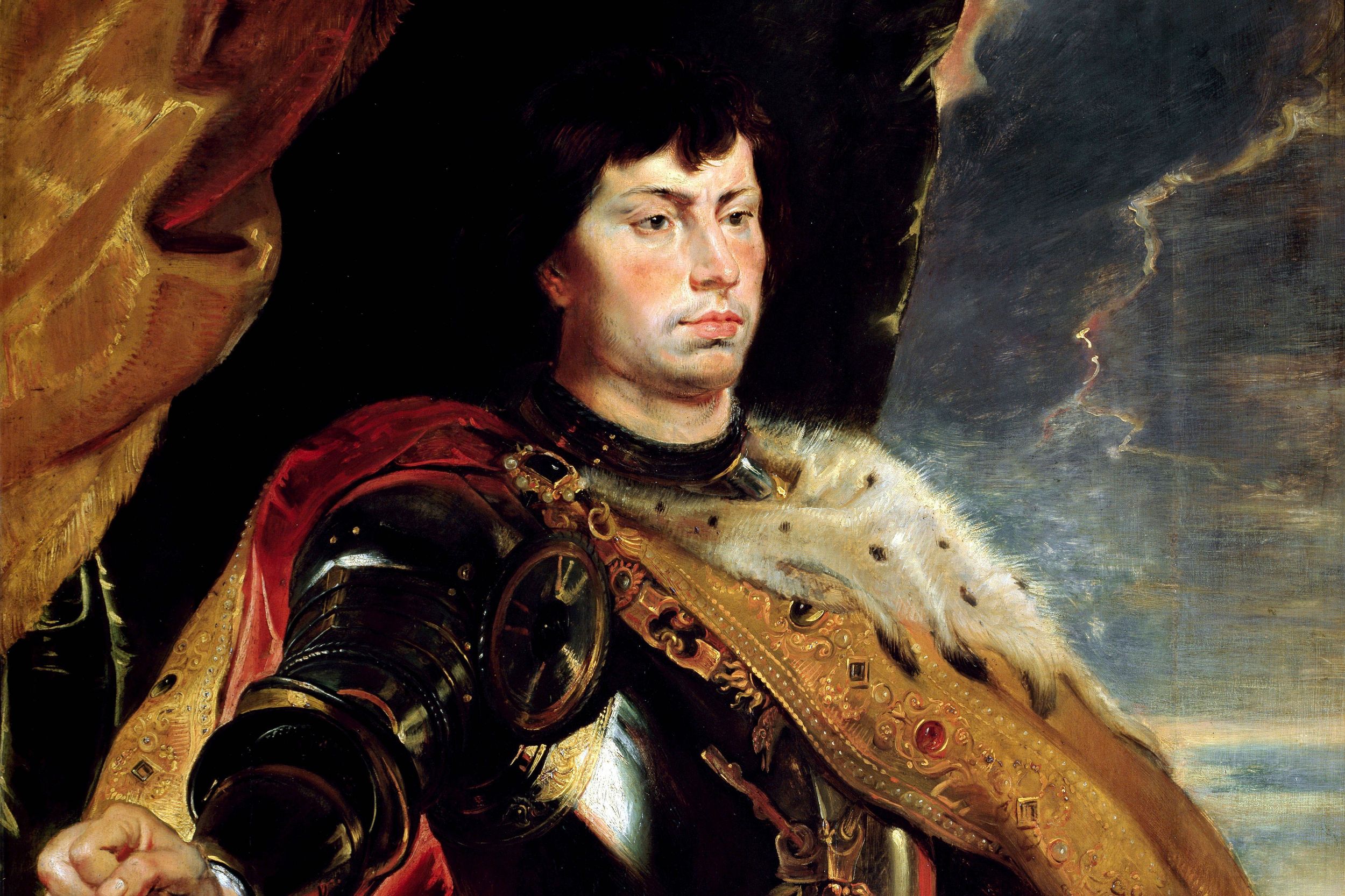
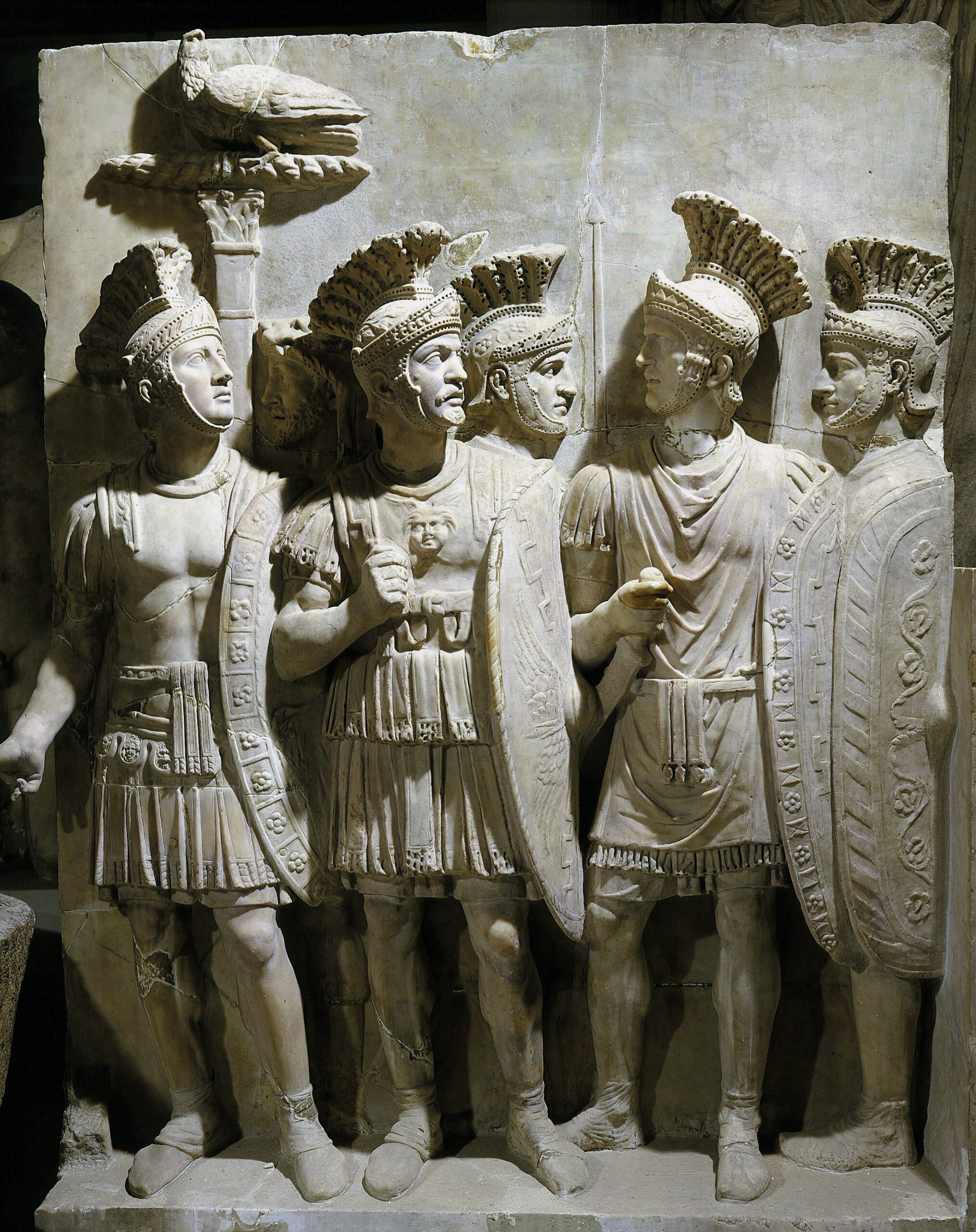
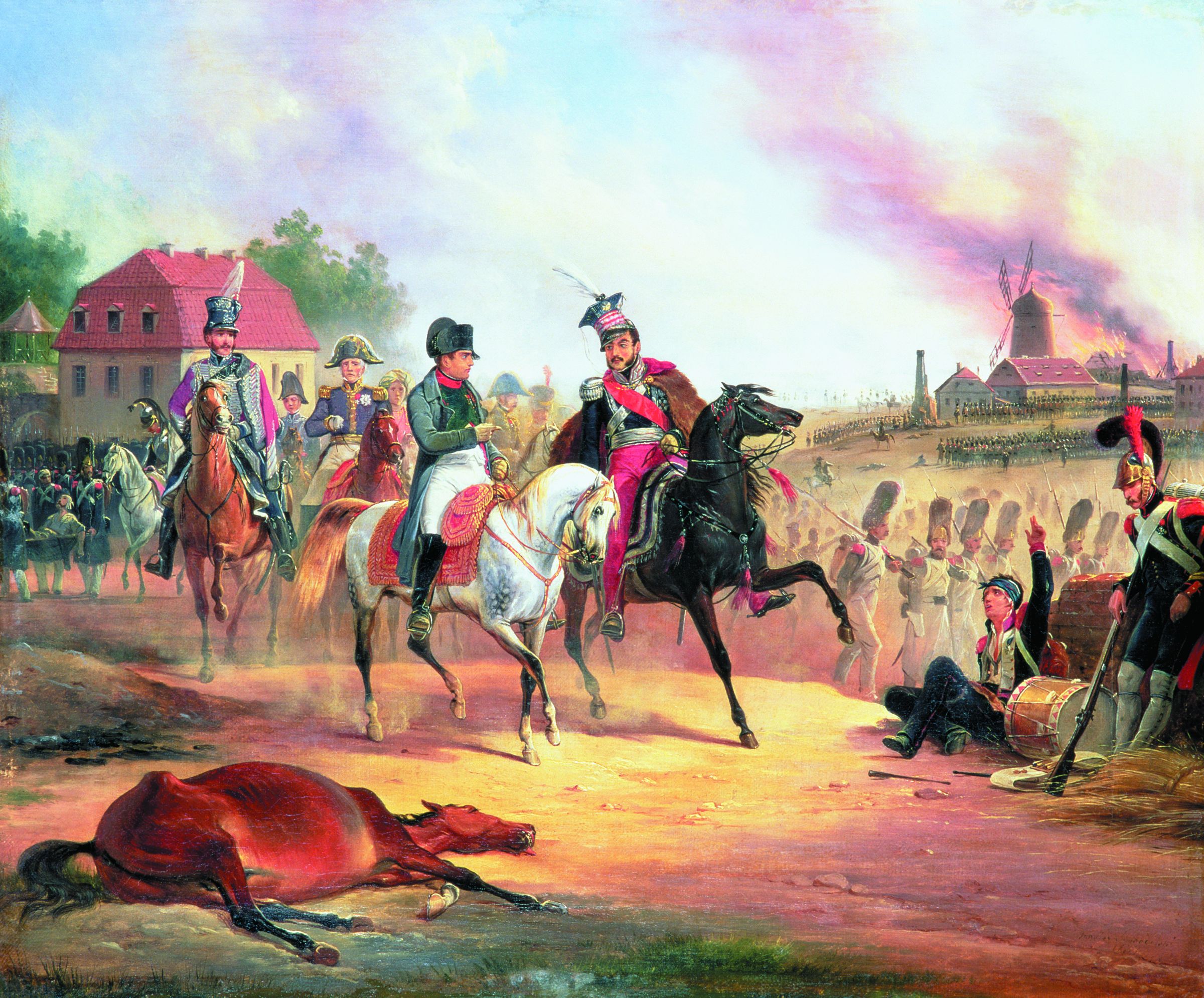

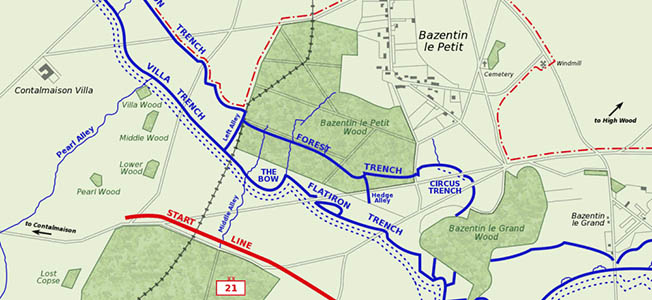
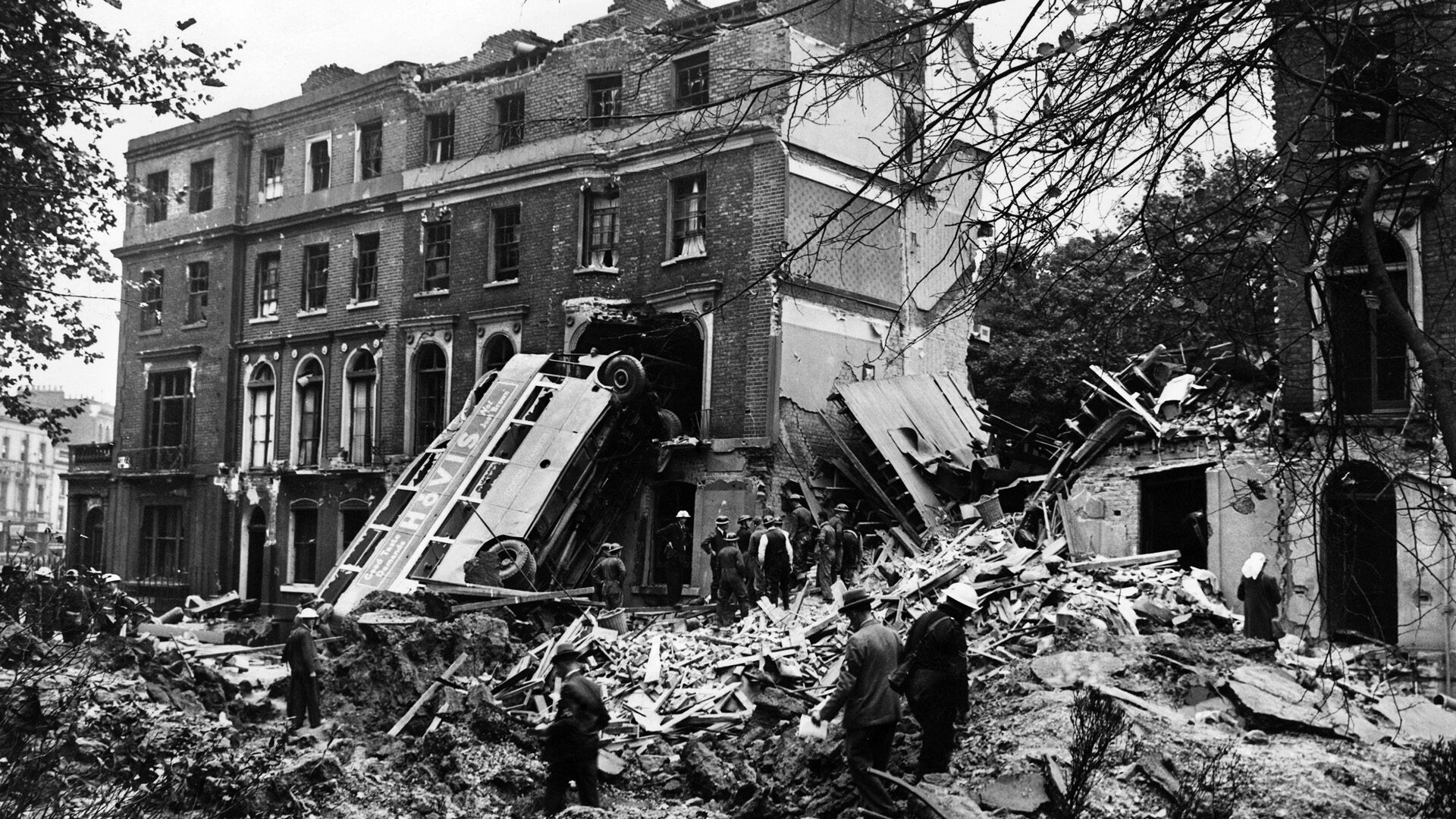
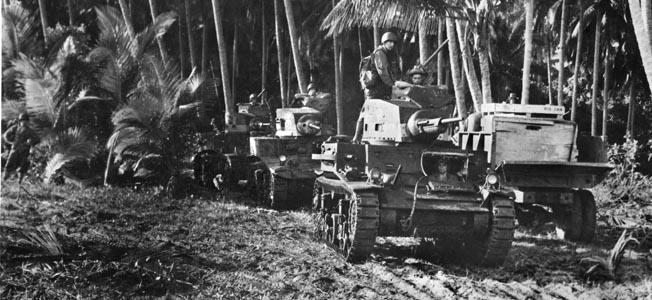
Exciting and well-written, almost like an adventure story.
It makes me wonder which of the Royal Navy ships were commanded by Horatio Hornblower and Jack Aubrey!